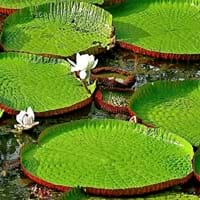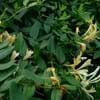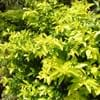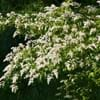Life Span
Perennial
Annual
Type
Flowering Plants, Shrubs
Aquatics
Origin
Eastern Asia
Hybrid origin
Types
Not Available
Not Available
Habitat
Barren waste areas, disturbed sites, Fields, Forests, Wet lands
along watercourse
USDA Hardiness Zone
4-11
10-15
AHS Heat Zone
Not Available
12-9
Sunset Zone
Not Available
21,22
Habit
Cushion/Mound-forming
Spreading
Flower Color
White, Yellow
White, Pink, Light Pink
Flower Color Modifier
Bicolor
Not Available
Fruit Color
Black
Not Available
Leaf Color in Spring
Green
Green, Yellow green, Bronze
Leaf Color in Summer
Green
Green, Yellow green
Leaf Color in Fall
Green
Green, Yellow green
Leaf Color in Winter
Green
Green, Yellow green
Leaf Shape
Oval
Disc shaped
Plant Season
Summer
Spring, Summer, Fall
Sunlight
Full Sun, Partial shade
Full Sun
Type of Soil
Well drained
Clay, Loam
The pH of Soil
Neutral
Acidic, Neutral
Soil Drainage
Well drained
Not Available
Bloom Time
Late Winter, Spring, Summer
Summer, Indeterminate
Tolerances
Drought
Wet Site
Where to Plant?
Ground
In Water
How to Plant?
Layering, Seedlings, Stem Cutting
Seedlings
Plant Maintenance
Medium
Medium
Watering Requirements
Get enough water whenever the soil is dry
Keep immersed in water
In Summer
Lots of watering
Aquatic Plant
In Spring
Moderate
Aquatic Plant
In Winter
Average Water
Aquatic Plant
Soil pH
Neutral
Acidic, Neutral
Soil Type
Well drained
Clay, Loam
Soil Drainage Capacity
Well drained
Not Available
Sun Exposure
Full Sun
Bright direct sunlight
Pruning
Remove dead or diseased plant parts
Remove damaged leaves
Fertilizers
All-Purpose Liquid Fertilizer, General garden fertilizer
No fertilizers needed
Pests and Diseases
Not Available
Aphids, Snails
Plant Tolerance
Drought
Frost, Full Sun
Flower Petal Number
Single
Double
Foliage Texture
Not Available
Bold
Foliage Sheen
Not Available
Glossy
Attracts
Bees, Birds, Butterflies
Insects, Moths, Snakes
Allergy
poisonous if ingested, Skin irritation
Skin irritation
Aesthetic Uses
Showy Purposes
Cottage Garden, Showy Purposes
Beauty Benefits
Not Available
Making cosmetics
Environmental Uses
Air purification, Food for birds
No fertilizer, pesticides, or herbicides needed, Very little waste
Medicinal Uses
Fever, Sore throat, Stomach aliments
Not Available
Part of Plant Used
Flowers, Leaves
Flowers
Other Uses
Making Perfumes, Used as Ornamental plant, Used for its medicinal properties
Used as Ornamental plant
Used As Indoor Plant
No
Sometimes
Used As Outdoor Plant
Yes
Yes
Garden Design
Container, Cutflower, Dried Flower/Everlasting, Groundcover, Mixed Border, Rock Garden / Wall
Feature Plant, Tropical, Water Gardens
Botanical Name
Lonicera japonica
VICTORIA 'Longwood Hybrid'
Common Name
Japanese Honeysuckle, suikazura, jinyinhua
Giant Waterlily, Longwood Hybrid Giant Waterlily
In Hindi
जापानी Honeysuckle
पानी लिली
In German
Japanese Honeysuckle
Riesen- Seerose
In French
Chèvrefeuille japonais
géant nénuphar
In Spanish
madreselva japonesa
lirio de agua
In Greek
Το ιαπωνικό αγιόκλημα
νούφαρο
In Portuguese
Honeysuckle japonês
waterlily
In Polish
wiciokrzew japoński
Lilia wodna
In Latin
CISSANTHEMOS Italica
ingens aqua lilium,
Phylum
Magnoliophyta
Angiosperms
Class
Magnoliopsida
Equisetopsida
Order
Dipsacales
Nymphaeales
Family
Caprifoliaceae
Nymphaeaceae
Clade
Angiosperms, Asterids, Eudicots
Angiosperms
Tribe
Not Available
Not Available
Subfamily
Not Available
Not Available
Number of Species
Not Available
Properties of Japanese Honeysuckle and Giant Waterlily
Wondering what are the properties of Japanese Honeysuckle and Giant Waterlily? We provide you with everything About Japanese Honeysuckle and Giant Waterlily. Japanese Honeysuckle doesn't have thorns and Giant Waterlily doesn't have thorns. Also Japanese Honeysuckle does not have fragrant flowers. Japanese Honeysuckle has allergic reactions like poisonous if ingested and Skin irritation and Giant Waterlily has allergic reactions like poisonous if ingested and Skin irritation. Compare all the properties and characteristics of these two plants. Find out which of these plant can be used as indoor plant. If you are interested to decorate your house and garden, find out aesthetic uses, compare them and select the plant which will beautify your surrounding. Along with beautification, try comparing medicinal and edible uses of Japanese Honeysuckle and Giant Waterlily and you can choose the plant having best and most benefits.
Season and Care of Japanese Honeysuckle and Giant Waterlily
Season and care of Japanese Honeysuckle and Giant Waterlily is important to know. While considering everything about Japanese Honeysuckle and Giant Waterlily Care, growing season is an essential factor. Japanese Honeysuckle season is Summer and Giant Waterlily season is Summer. The type of soil for Japanese Honeysuckle is Well drained and for Giant Waterlily is Clay, Loam while the PH of soil for Japanese Honeysuckle is Neutral and for Giant Waterlily is Acidic, Neutral.
Japanese Honeysuckle and Giant Waterlily Physical Information
Japanese Honeysuckle and Giant Waterlily physical information is very important for comparison. Japanese Honeysuckle height is 800.00 cm and width 800.00 cm whereas Giant Waterlily height is 510.00 cm and width 37.00 cm. The color specification of Japanese Honeysuckle and Giant Waterlily are as follows:
Japanese Honeysuckle flower color: White and Yellow
Japanese Honeysuckle leaf color: Green
Giant Waterlily flower color: White, Pink and Light Pink
- Giant Waterlily leaf color: Green, Yellow green and Bronze
Care of Japanese Honeysuckle and Giant Waterlily
Care of Japanese Honeysuckle and Giant Waterlily include pruning, fertilizers, watering etc. Japanese Honeysuckle pruning is done Remove dead or diseased plant parts and Giant Waterlily pruning is done Remove damaged leaves. In summer Japanese Honeysuckle needs Lots of watering and in winter, it needs Average Water. Whereas, in summer Giant Waterlily needs Aquatic Plant and in winter, it needs Aquatic Plant.





